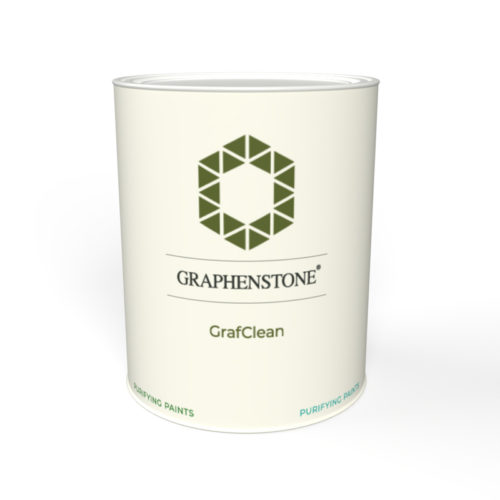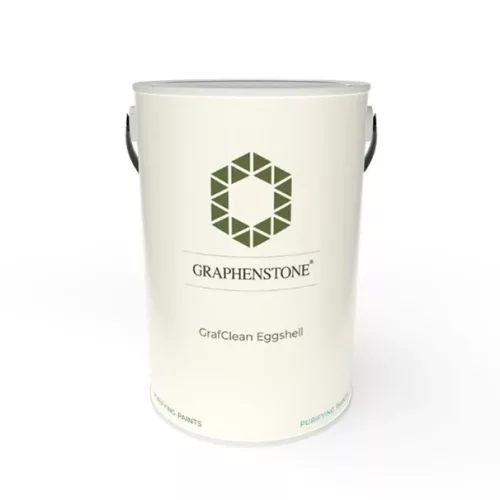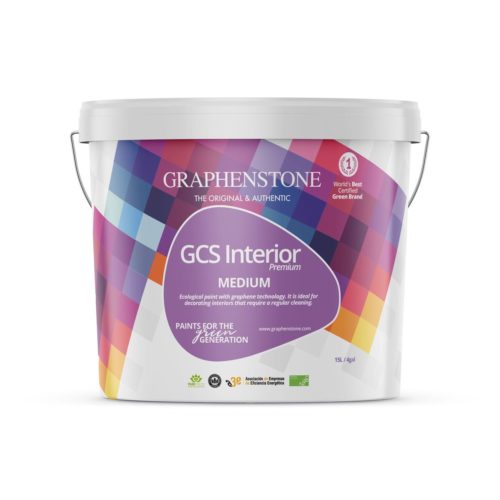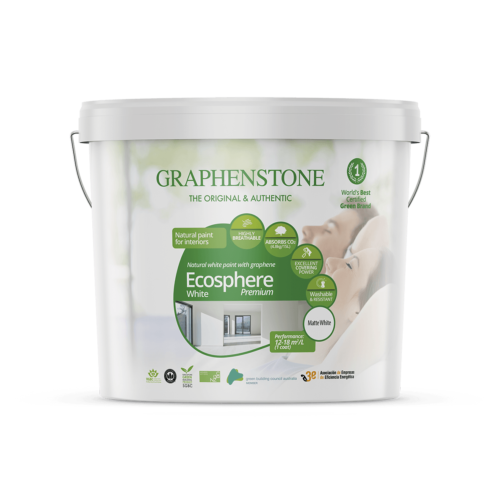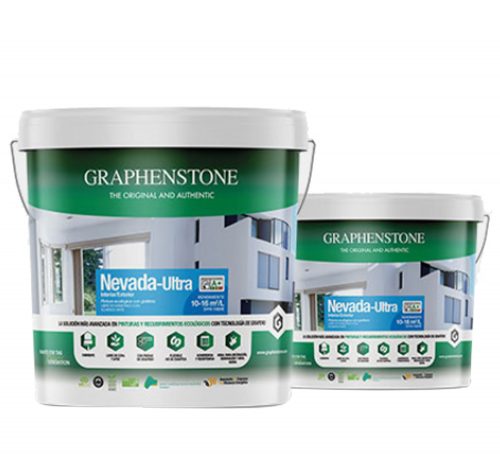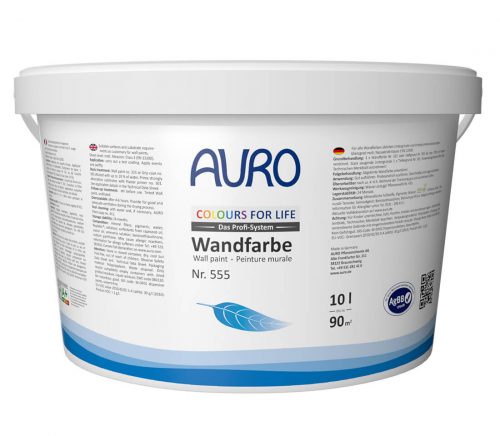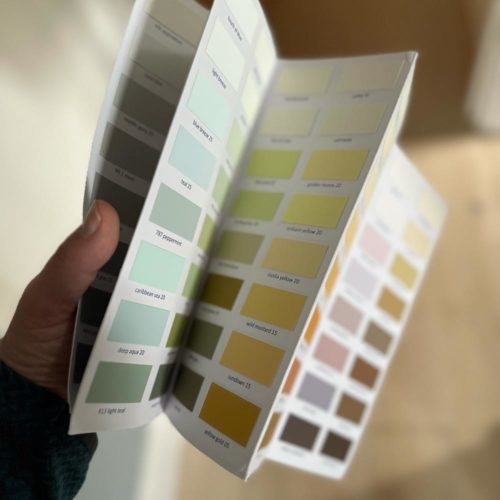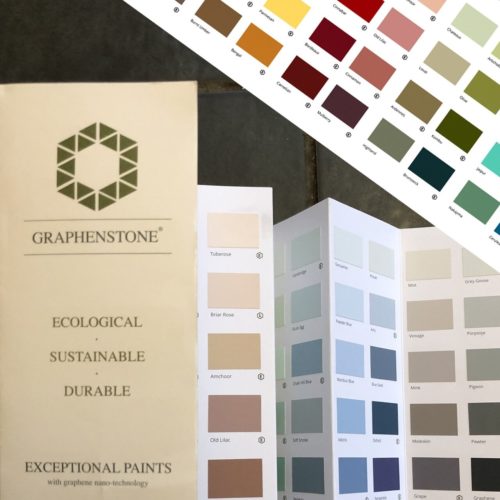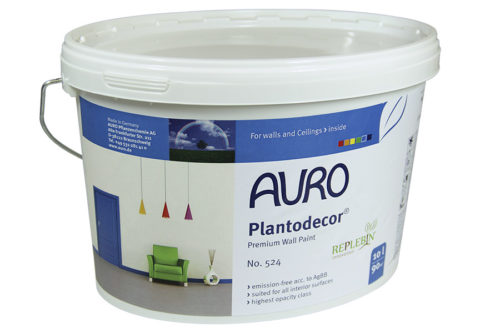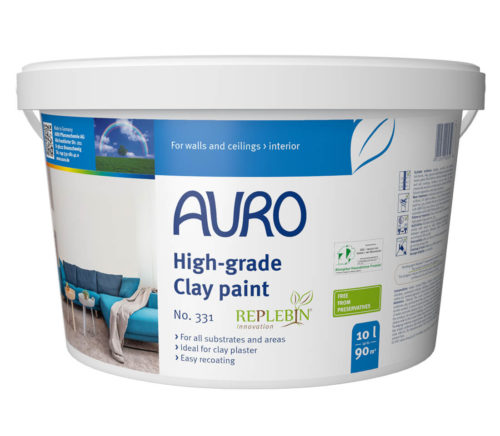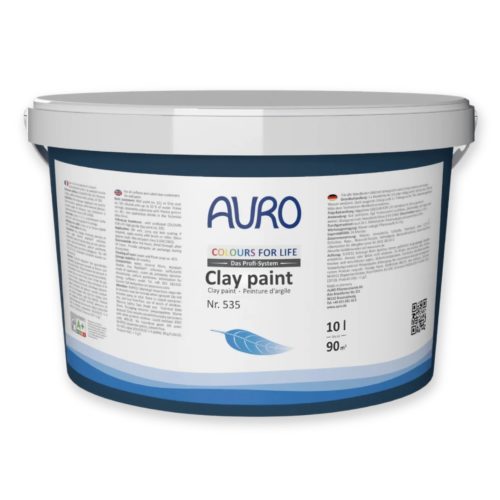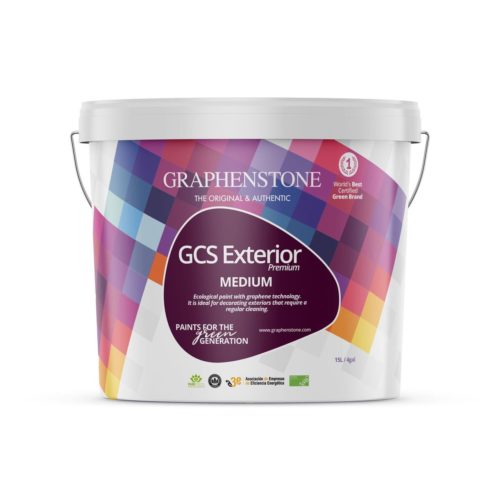Breathable Paint & Breathable Masonry Paints
Natural Paint for interior & exterior walls, and woodwork
Breathable wall paints are designed to allow moisture or water vapour to escape and permeate through it.
If there is any form of dampness within your walls, you need the moisture to be able to be released and evaporate, rather than being trapped behind the paint thus leading to bobbles, blister and spots on your paintwork.
Lots of paint brands claim to be ‘breathable’, it’s a classic for easy greenwashing.
So be aware when you find ‘cheap’ breathable paint at your local DIY shop! Graphenstone paints are all SD Class 1 or better, actually breathable, and suitable for period and historic building. Look for that SD value!
More:
Guide to breathable paint for lime plaster.
Understanding Breathable Paints: Your Guide to Choosing the Right Paint for Your Project
Are all emulsion paints breathable?
Which breathable paint should I use on normal walls and ceilings? Easy. Just use the Grafclean Premium.
What kind of breathable paint are you looking for?
Choose the type of natural paint you’re looking for to jump straight to our recommendation!
These are modern, efficient, plastic free and hard wearing breathable paints, rivalling the best ‘chemical paints’ on the market but these tick all the eco, sustainability and natural credentials. Graphenstone paint is the most certified green paint company, no one else comes close which is why we have chosen to only stock this brand going forward.
There is now no need to use conventional high VOC paints that leach chemicals into the air for several years after you have painted your walls, make the world a cleaner place by choosing natural paints for your breathing spaces. This range of fab Graphenstone eco paints are all great for breathability.
BREATHABLE WALL PAINT FOR NORMAL / STANDARD WALLS
Buy: Grafclean Premium Interior Emulsion
Why? Top selling, most popular, top choice. I use Grafclean Premium almost entirely throughout my home.
For: Standard walls, either already painted, needing new paint, bare plaster, repaired plaster, or just in need of a repaint and not really sure what type they are! If this is you, then just choose the Grafclean. Great for repainting & covering. No primer needed for most surfaces.
View: Beautiful, Hard Wearing Colours
Order: Hand painted Colour Chart
Just show me the paint: Grafclean Premium
Natural, Breathable, Vegan, VOC Free, Washable & Hard Wearing.
Flexible Matt Finish.
Impressive Coverage: 10-16m2 per litre
It’s the staff choice! Why? Literally the only paint you need!
BREATHABLE PAINT FOR WOOD / TRIM / METAL / WALLS / MULTI PURPOSE
Graphenstone GrafClean Midsheen / Eggshell is very versatile multi surface natural paint for both walls and other surfaces such as wood and trim.
When painting on anything other than walls, you’ll need the Four2Four Natural primer. You can paint on almost any surface after the primer, very wipeable and great for high traffic areas. Suitable for all walls and ceilings, primed wood, metal, MDF and other boards (when using the Four2Four Primer). Once primed with Four2Four you can even paint it on smooth and non-porous surfaces such as ceramics, polyurethane or epoxy paints, plasticised panels, etc.
GRAPHENSTONE GRAFCLEAN BREATHABLE MIDSHINE / EGGSHELL
Breathable Paint
Beautiful, Hard Wearing Colours: VIEW COLOUR CHART
Order The Hand painted Colour Chart here.
Good hiding power
Washable, wipeable and resistant
Tough and long lasting colour
Free of VOC emissions.
Surfaces once primed (with this primer) can be: Metal, Wood, MDF, ceramics, polyurethane or epoxy paints, plasticised panels
Suitable for Metal, Wood, MDF and lots of difficult surfaces with the primer.
Grafclean Premium‘is Certified “Toy Safe” & “Baby Safe” to EN 71-3:2019 -and EN 71-3:2013 + A3:2018
HERITAGE & TRADITIONAL HOMES OR LISTED BUILDINGS
If you have a home like this chances are you know what interior wall paint you are looking for. Although almost always you can use just the standard Grafclean Premium as above, you might be interested in the Heritage range of paints, which are a bit more classic for what you need. Graphenstone GCS Interior is a great choice here. We also have the natural exterior wall paint if you require.
GRAPHENSTONE GCS INTERIOR HERITAGE BREATHABLE INTERIOR WALL PAINT
A classic, breathable matt for heritage / listed properties
Ultra Matt finish for Lime plasters
View hand painted colour chart
Lime-silicate blend colour paint for interiors
Flat Matt – Rich natural finish
Traditional – Natural lime and silicate paint
Breathable – Reduces condensation and allows walls to breathe
Durable –Wet scrub resistant: class 1
Healthy – Free of VOC’s and harmful toxins
Colourfast– Uses strong exterior pigments
BREATHABLE LIME BASED NATURAL PAINTS
This is a very specific choice, and for people that have lime based walls and plaster work, or just know how to use and specifically want lime, or a lime wash style paint. Here, the best choice is the Ecosphere paint, which is available in white and an array of some of the lighter shades of the colour range.
GRAPHENSTONE ECOSPHERE LIME PAINT for interior walls
The highest quality natural lime paint for Interiors, highly breathable paint, absorbs CO2,
In white and 14 pastel colours
Natural, Safe & Chemical Free
VEGAN & VOC free!
White is MI & Thiazole free
Cradle to Cradle GOLD standard, which is as good as it gets
MASSIVE CO2 ABSORPTION! Three 15L tubs of this breathable paint absorbs as much CO2 from the air as a fully grown tree does in a year!
BREATHABLE TRADE WHITE FOR INTERIOR WALLS AND CEILINGS
Finally, if you just want the very cheapest option for large scale painting, then Nevada Pro is a great solution. It’s not as good as the Grafclean Premium, nor available in colours, but it is good if all you want to do is use it as a primer, or a quick cleanup of old white walls that just need a freshen.
BRILLIANT WHITE Emulsion Paint
100% natural and sustainable materials
Zero toxins, plastics or petrochemicals
VOC free (<0.01%/L)
All mineral bases inert as waste material
Preservative & chemical free – no MIT/BIT Breathable – Class 1 – Sd < 0.14
Class 1 Wet Scrub – EN 13300
High yield – up to 16m2/L
Economical Contract Matt
Do you have black mould or condensation problems, or think you have a ‘damp problem’?
By using a ‘standard’ petrochemical plastic paint, you are giving no choice to the moisture, and effectively trapping behind your paint within your plaster or render, so you would want to use a natural and breathable paint for damp walls. You would never want your walls to be sealed in this way. Although it seems you are making them ‘waterproof’ and stopping the water penetrating, you actually you are just trapping the moisture within the fabric of your walls, leading to deterioration and more problems down the line due to this short term fix. How to paint on new plaster and on lime plaster. What is lime paint and do I need it?
These paints are Zero VOC, great colours, tough and easy to apply to walls and ceilings. For existing painted walls, thin first coat mixed with 10% water as a primer, then another coat over that when dry.
We have more information linked below so you can read more information about using breathable free paints
- What are breathable paints?
- Breathable paint for damp walls, stone walls, internal walls & cellar walls
- What is the best natural interior breathable paint?
- What is the best natural breathable exterior masonry paint?
- What is breathable paint and why does it matter?
- What are the advantages of Breathable paint
- Are breathable paints easy to use and to apply?
- What kind of applications can I use breathable paint for?
- Where can I buy a highly breathable paint?
- Should I think about breathability before renovation?
- What is the Impact of Humidity and Temperature on Paint
- What is the effect of Temperature on Paint
- What is the effect of Humidity on Paint
- Are Breathable Paints the Answer to These Problems?
- How do I Identify a Breathable Paint from the SD Value?
- Does My Building Need Breathable Paint?
- What are the types of Breathable Paint?
- Lime-based breathable paints
- Clay Paints breathable paints
- Natural breathable paints
Breathable paint for damp walls, stone walls, internal walls & cellar walls
A breathable paint has special microporous characteristics allowing water vapour permeate through materials. The rates of permeability are defined with an Sd value, which measures how much of a barrier the material is to water vapour. The lower the Sd value, the more breathable the paint is. Sd values of common breathable paints range from 0.02m to 0.5m, meaning that an Sd value of 0.5 is the equivalent to 50cm of air barrier.
Breathable paints such as lime based natural paints allow water to evaporate away quickly letting the walls, the window frames, the door frames and the render to breathe naturally without trapping moisture. So they are ideal for rooms with large moisture and temperature fluctuations such as kitchens, basements, bathrooms and laundry rooms. Breathable paint for damp walls. Breathable paint for stone walls, breathable paint for internal walls & Breathable paint for cellar walls and silicate masonry. So if you are planning to paint your new house or renovate your old historic building, use breathable natural paints. However, before buying them, remember to read the technical advice/ ingredients sheet. All environmentally friendly paint manufacturers are obliged to specify their ingredients.
What is the best natural interior breathable paint?
We offer a number of breathable paints, and Graphenstone natural breathable paints are by far the best on the market to date. We can throughly recommend the paints below for most interior applications, this is our top selling paint for a very good reason! The best breathable paint for lime render would be one of the paints below.
What is the best natural breathable exterior masonry paint?
The best natural breathable exterior masonry paint would be the Graphenstone Biosphere.
What is breathable paint and why does it matter?
How is it possible that houses built decades ago maintain their plaster and walls in an excellent condition, when more recent construction and builds in the same city are in poor condition after just a few years? This is because that buildings need to breathe.
Everyone knows that when an old wall is painted it has the ability to change the mood of the occupants. But the colour of the paint is not the only thing that matters. Its compounds can protect or harm our health and our house.
In the past, people used to cover their stone walls with lime and plaster, using a minimum amount of cement, so they had achieved good breathability of their houses. As time went by, the use of various chemical insulation, abundant cement and finally coating with plastic petrochemical paint on top creating a very thin -but without pores – membrane led to perfect insulation.
However, humidity, unhealthy volatile components contained in the various chemical based paints used for furniture, radiators and walls and other harmful everyday materials such as toxic cleaning supplies, etc. are trapped inside the house. The use of breathable natural paints which are friendlier not only to our health and the environment, but to our homes, as well are the logical solution.
The point is: Keep old walls breathing and save them from building up a damp problem by allowing the moisture to escape through breathable materials. Clay paint was an 'original' breathable paint, as was lime – but modern natural paints like many in our range outperform these by a long way.
What are the advantages of Breathable paint?
- They hardly ‘crack’, because no moisture is trapped into the materials.
- Breathable paint helps to prevents wood rot, as moisture gets away.
- They create a healthy indoor microclimate.
- Natural materials and eco conscious manufacture.
- They have no or low odour. They don’t emit VOC, or have very minimal VOC content.
- Easy to apply to walls and ceilings. We would advise using a roller or brush.
- They are economical.
- They can be used for coatings on surfaces containing lime and cement, loam rendering, woodchip wallpaper or old chalk silicate paints. They provide high coverage.
- They have both internal and external applications.They can be easily cleaned by light sponging.
Are breathable paints easy to use and to apply?
Yes, breathable paints apply in pretty much the same way as standard petrochemical paint, no extra skill needed!
What kind of applications can I use breathable paint for?
There are a great deal of applications for breathable paint, such as using breathable paint for lime plaster, or using them as a breathable emulsion paint for porous renders. We offer paints for the best microporous masonry paint, both exterior breathable paint or breathable paint for interiors.
Where can I buy a highly breathable paint?
Plenty of places offer it, but whether it contains chemicals is another matter, so I suggest you look at the range we have here.
Should I think about breathability before renovation?
If you are about to start a renovation, remodelling, or construction of your building, then there are a lot of things you would need to educate yourself on to be able to make the best possible choices for your home. One parameter that you need to assess is the paint your home is going to be covered in, both externally and internally.
A lot of the modern paints you would find on the market contain certain pigments, binders, and solvents that are packed with harmful chemicals. These chemicals can be detrimental to human health and the environment. If this wasn’t enough for you to reevaluate your choices and look for healthier alternatives, these synthetically formulated paints might also reduce your building performance by giving way to condensation and mould problems.
Plenty of places offer it, but whether it contains chemicals is another matter, so I suggest you look at the range we have here.
What is the Impact of Humidity and Temperature on Paint
The weather conditions have a considerable impact on the quality and performance of the paint. Wind speeds, temperatures, precipitation and moisture content in the air undermine the process of painting and repainting. In this article, we will discuss two of the most important factors that influence synthetic paints: temperature and humidity. These two greatly influence the painting and drying phases of paint application, as well as the durability and longevity of paint afterward.
Plenty of places offer it, but whether it contains chemicals is another matter, so I suggest you look at the range we have here.
What is the effect of Temperature on Paint
In colder temperatures, the drying of paint is comparably slower. This is because paint starts to come together into a thicker than usual coat of paint. It reduces the rate at which the solvent evaporates, and increases the time taken for the paint to oxidise if the paint is oil-based. The opposite happens in the case of higher temperatures. The paint dries too quickly and results in cracking, uneven coat, and lumps.
What is the effect of Humidity on Paint
Humidity also has plenty of undesirable effects on the application of paint. In a highly humid environment, water in the atmosphere can mingle with the fresh coat of paint, reducing both the quality and application of the paint. Higher water content in the atmosphere also impairs the drying process and makes it longer for latex and acrylic paints to dry. In case you are painting wooden surfaces, humid environments can seep into the wooden structure and reduce its binding affinity to the paint.
Are Breathable Paints the Answer to These Problems?
Breathable paints work well in fluctuating weather conditions, both interior and exterior Breathable paints, depending on their formulation, can readily adapt to the environment. For instance, lime-based breathable paints work great in humid conditions. These paints absorb the moisture content in the air, reducing the humidity of the environment, and release moisture into the air in the dryer and arid atmospheric conditions. With breathable paints, you wouldn't have to worry about reducing paint performance if you live in fluctuating weather conditions.
How do I Identify a Breathable Paint from the SD Value?
Even though you can always read the label of paints to check whether the product is breathable or not, we think you should also be able to identify breathable paints in the absence of it. What you need to look for on the paint label is the SD value of the pant. An SD value describes how well a material is able to resist the passage of water, or moisture, through it. Higher SD value indicates greater resistance to vapour diffusion, whereas lower SD values show higher water permeability. Breathable paints are supposed to have lower SD values, ranging from 0.01 to 0.1.
Does My Building Need Breathable Paint?
Whether or not your building needs a breathable paint depends entirely on the construction of your building. If your building is adequately porous and constructed from more natural and organic materials like clay, wood, cellulose, etc., you might not direly need breathable paint because an organic structure allows for water permeability and ample ventilation.
In the case that your building is of modern construction and made of synthetic materials like plastic, cement, or such, then you might find yourself in a very impermeable building. While you might be inclined to think that it would offer better insulation, which is true, these buildings are more prone to mould and condensation problems because they facilitate the buildup of water within the building which can severely undermine building performance.
By using breathable paint on your internal walls, you help improve the indoor air quality and ambiance of your building. Breathable paints help regulate humidity by absorbing excess moisture and releasing it in drier conditions – meaning they basically act as organic dehumidifiers. So if you're living in a hot and humid climate, your house would be more prone to condensation problems, which means you should definitely look into your options in breathable paint.
What are the types of Breathable Paint?
In an ever-evolving market, you would find a range of breathable paint from different brands. The market is pretty competitive, and more and more companies are coming up with new and innovative formulations to satisfy consumer demand. Some of the most popular breathable paints you would find in the market are:
Lime-based breathable paints
Lime-based paints, particularly lime-wash, have been around for quite some time because of their eco-friendly constitution and colour availability. These paints work well on lime-rendered and porous surfaces. What's more, is that these paints all provide good wall coverage and great breathability. If your building has some old and damp walls, or if you have a basement, you might want to consider lime-based paints as an option.
Clay Paints breathable paints
Clay paints are also very popular in the category of breathable paints. They offer great breathability and work very well on almost all surfaces, even pre-painted walls, and plain plaster. However we have yet to find a long lasting and true natural clay paint.
Natural breathable paints
Most of the paint that is naturally made is quite breathable and suitable paint, but you would have to check the SD value of the product to confirm this. Exterior Paint and interior paints made from natural ingredients like earth oxide pigments, minerals, or casein protein allow for good water permeability and contribute to lower SD values and a good level of breathability.
Read more:
- Where to Buy Breathable Paint in the UK
- Is plaster breathable?
- Is breathable paint waterproof?
- Can breathable paint prevent mould?
- Breathable Paints For Lime Plaster – What do I need?
- What is Wall Breathability, and how does breathable paint help?
- Are all emulsion paints breathable? Your Guide to Choosing the Right Paint & SD Values
- Breathable Plaster – Breathaplaster Natural Lime Plastering
- Breathable Wall filler – How to use
- Breathable Natural Lime Plaster & Eco plasters
- Is Breathable Paint Waterproof? Exploring the Characteristics and Benefits


